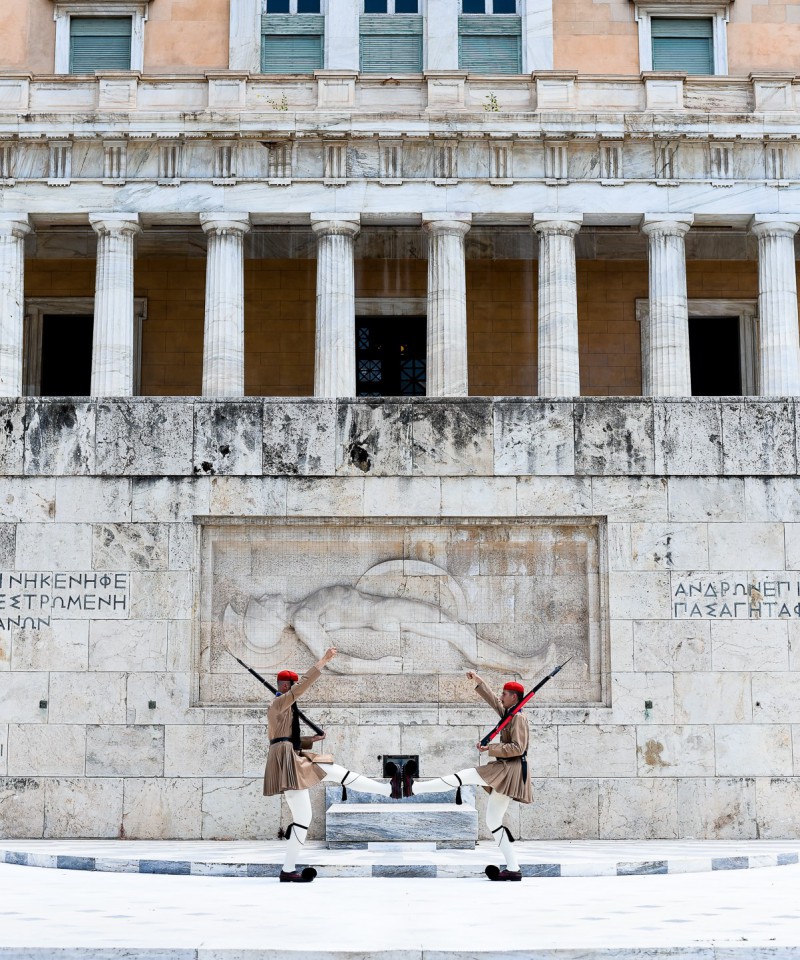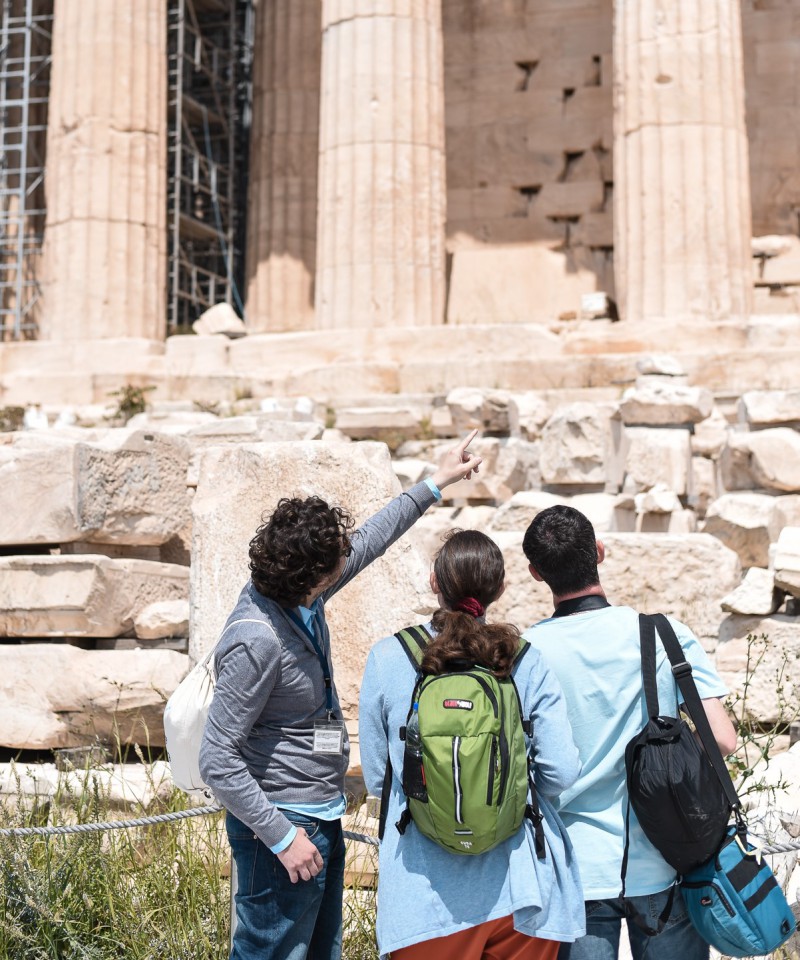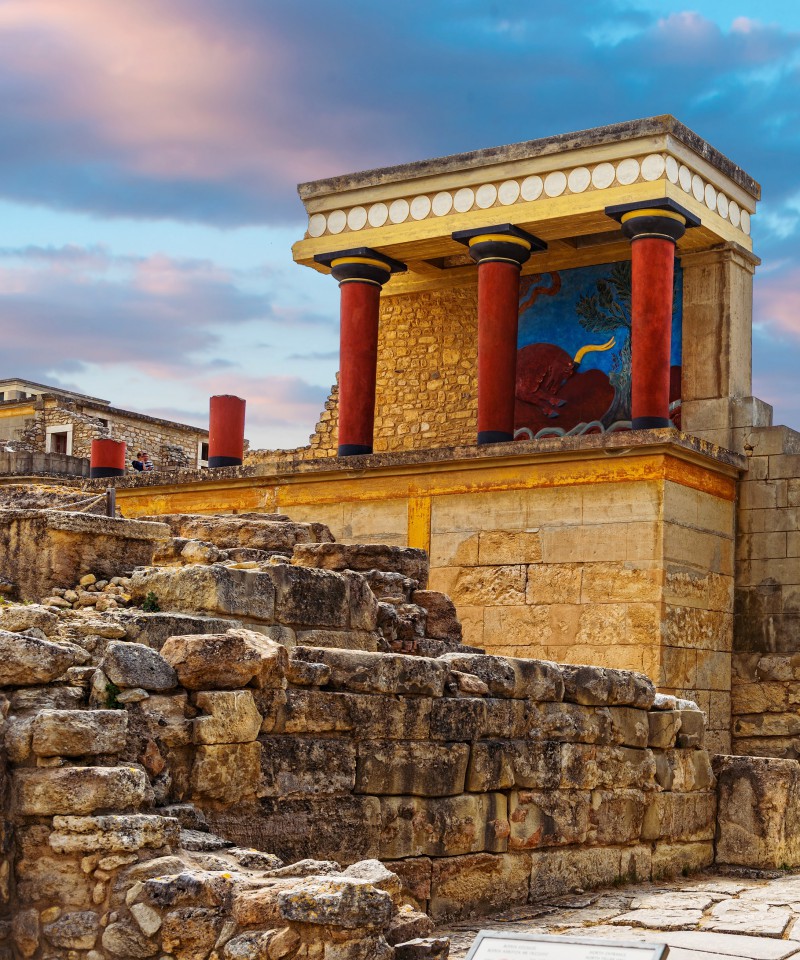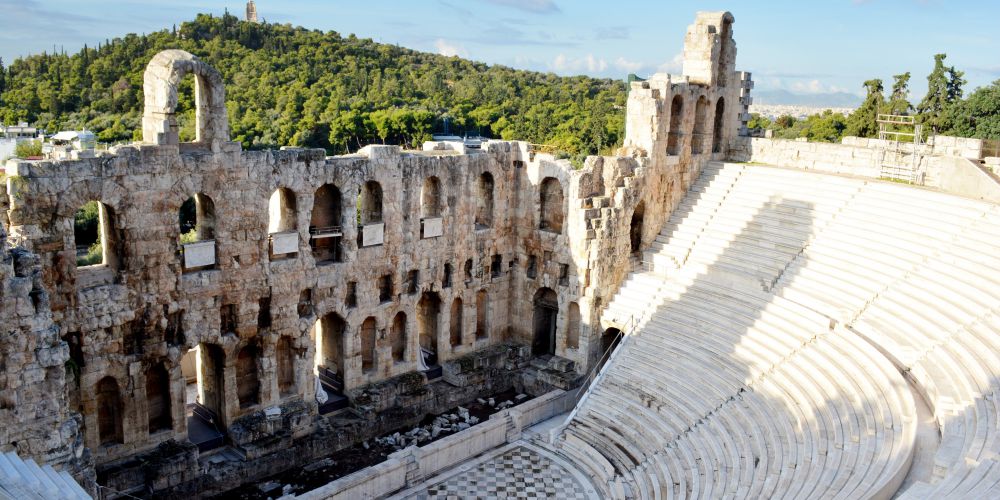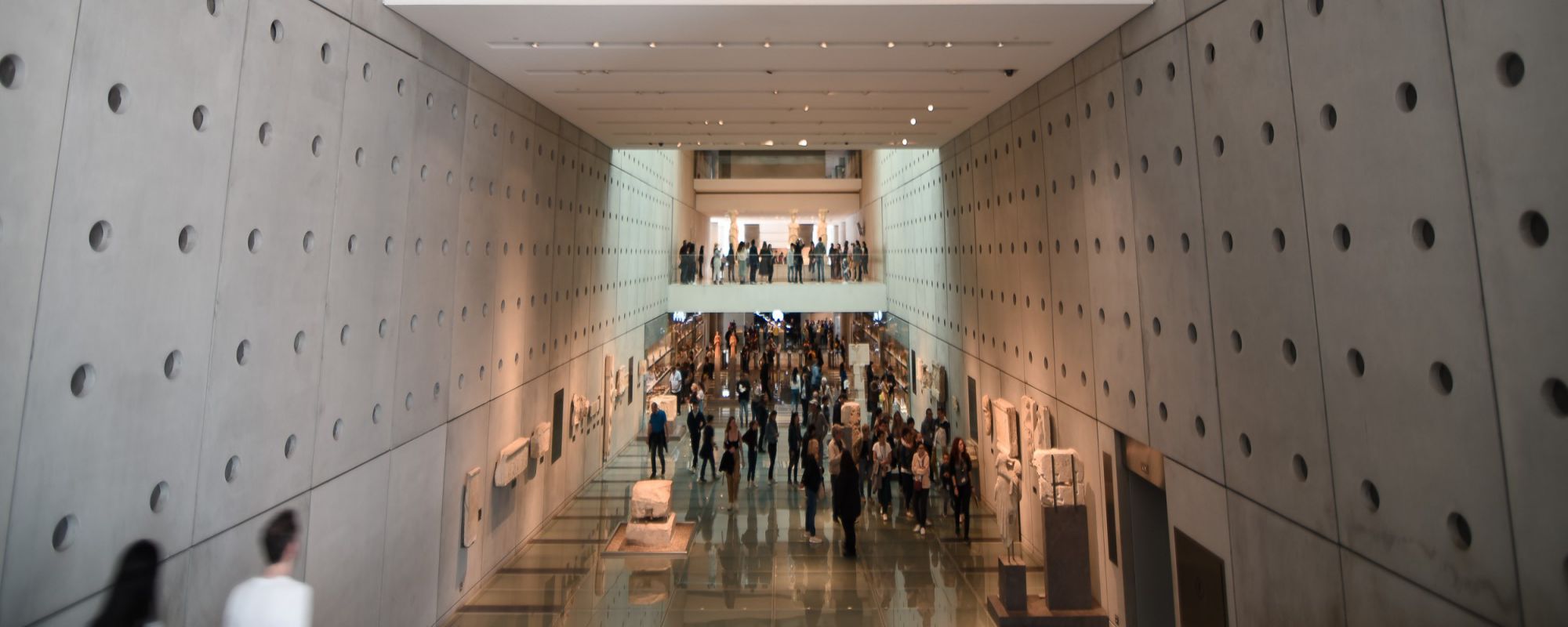
The Best Athens Museums (2026 Update)
Key Takeaways
- The most popular of Athens museums is the modern Acropolis Museum, housing exhibits from the excavations of the Acropolis Hill.
- The Benaki Museum is an integral part of the culture of Athens and Greece in general, with 6 museum annexes, 4 archival annexes, and an extensive library.
- If you're visiting Athens with kids, a stop at the Hellenic Children’s Museum is mandatory, offering activities that are based on theories that suggest learning is more effective through active participation and interaction.
- For fashion and jewelry lovers, the Jewelry Museum of Ilias Lalaounis hosts over 3,500 jewels and small sculptures in its permanent collection.
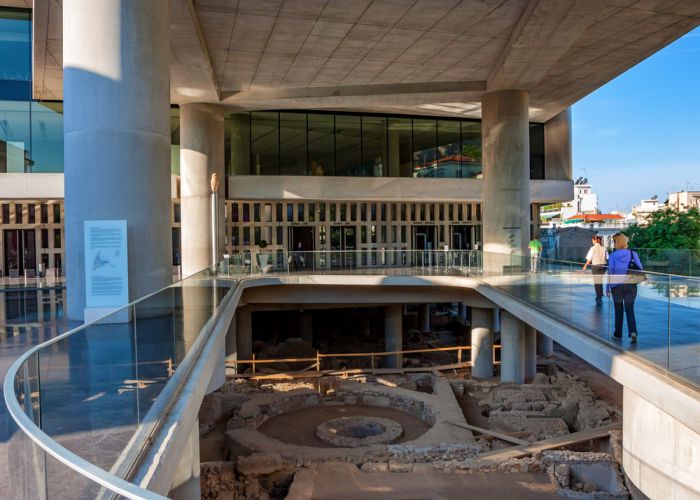
The Acropolis Museum in Athens is a beautifully designed exhibition of Athens’ greatest archaeological finds, magnificently displayed at the foot of the Acropolis itself. It is certainly not to be missed.
However, what many visitors do not get the chance to discover, are a good number of other, less-known museums in Athens, each with its own fascinating collections, often housed in architecturally opulent buildings.
In our ongoing quest to help you discover Athens like a local, here are the museums in Athens we believe are absolutely worth taking the time to explore.
Whatever your interest, I can say with almost certainty that there is a museum in Athens for you that will help you understand modern Greek culture, contemporary art, and the country's rich history.
From art to eras of Greek history to ancient Greek technology and innovation to sculptures displaying extraordinary craftsmanship, a stroll around the neighborhoods of the Greek capital will allow your attention to be caught by the glorious museums in Athens.
For now, let’s focus on the most significant ones, the best museums in Athens that undoubtedly deserve a place in your itinerary.
1. The National Archaeological Museum
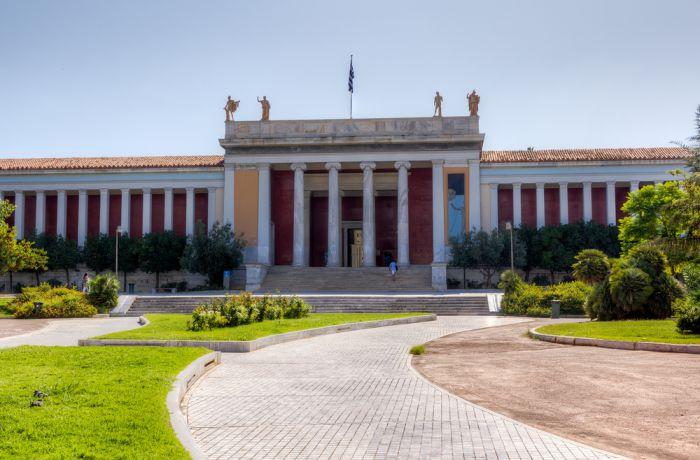
Regarded as one of the best museums in Athens and the world for its rich permanent collection of artifacts from Greek antiquity, the National Archaeological Museum is situated in the alternative neighborhood of Exarcheia, in an imposing neoclassical building painted in vibrant yellow and red colors.
Displaying pieces from the Neolithic era, Cycladic art, Mycenean period, Egyptian art, post-Byzantine era, and jewels from the Hellenistic period, the National Archaeological Museum has an extensive collection that is sure to leave an impression.
The National Archaeological Museum undoubtedly holds some of the most iconic pieces known worldwide, such as the Jockey of Artemision; a beautiful, striking bronze statue that is placed and lit perfectly in the halls of the museum; a personal favorite (!)
There is also the famous Mask of Agamemnon, which has since been proven not to have belonged to him but to a dead king who most probably died three centuries before Agamemnon. It is, nevertheless, an extraordinary piece of craftsmanship.
Gold not being in short supply at the museum, another intriguing piece is Theseus’ ring.
A golden signet ring depicts a bull-leaping scene (a Minoan sport frequently shown in paintings) with a lion to one side. Although its authenticity was once questioned, it has since had its origins confirmed back to the 15th Century BC.
The National Archaeological Museum is also home to a 118-year-old library with 20,000 volumes, many of which are extremely rare works of art, science, and philosophy.
As well as the permanent exhibitions, there are visiting exhibitions, and a large number of lectures on archaeology are held here throughout the year.
Last but not least, the National Archaeological Museum also has two cafés; one located outside on the edge of the square, with a tranquil atmosphere that offers a wonderful opportunity to sit back with a coffee and admire the architecture of the building.
The second is situated in the heart of the museum in the interior atrium. It is close to the museum shop, which has a wide array of memorabilia, paintings, and glassware.
Address: 44 Patission Street, Athens 10682
Telephone: +30 213 214 4800
Closest metro station: Viktoria
2. The National Historical Museum
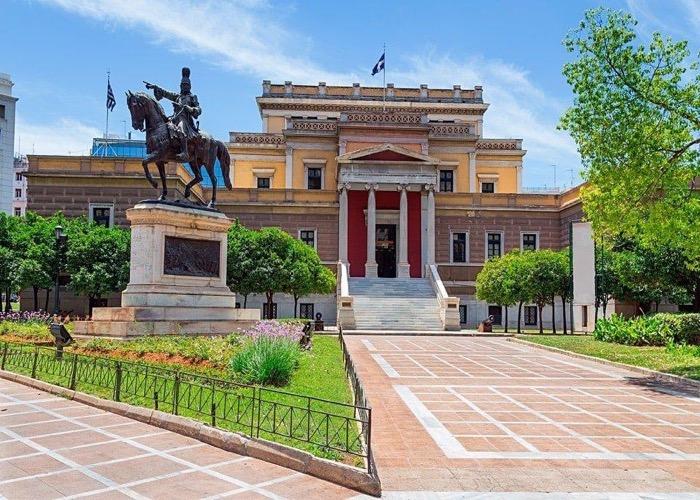
Like many of Athens’ museums, the National Historical Museum is housed in an impressive building, the Old Parliament Building in Kolokotronis Square.
What is most striking, however, is the imposing bronze statue of Theodoros Kolokotronis himself, a Greek general and pre-eminent leader of the Greek War of Independence (1821-1829) against the Ottoman Empire.
Astride his horse, Kolokotronis turns his head towards Parliament House whilst pointing his hand in the other direction to where the royal stables once stood.
This became a local joke that he was implying that the Parliamentarians ought to be housed in the stables due to their subservience to the King.
The collection is that of the Historical & Ethnological Society of Greece. It focuses mainly on the emergence of the modern Greek state with pieces from the Greek War of Independence.
As well as weaponry, costumes, and memorabilia from celebrated figures in Greek history, there is also a large collection of paintings, manuscripts, and exhibits from as far back as the capture of Constantinople in 1453 by the Ottomans. Lord Byron’s helmet and sword are also to be found here.
The museum also frequently displays temporary exhibitions ranging from art to theatre to music and displays dedicated to different regions of Greece.
Lectures, workshops, book fairs, and educational programs are frequently held here throughout the year.
Address: Old Parliament Building, 13 Stadiou Str. Athens
Telephone: +30 210 3237617
Closest metro station: Panepistimio
3. The Acropolis Museum
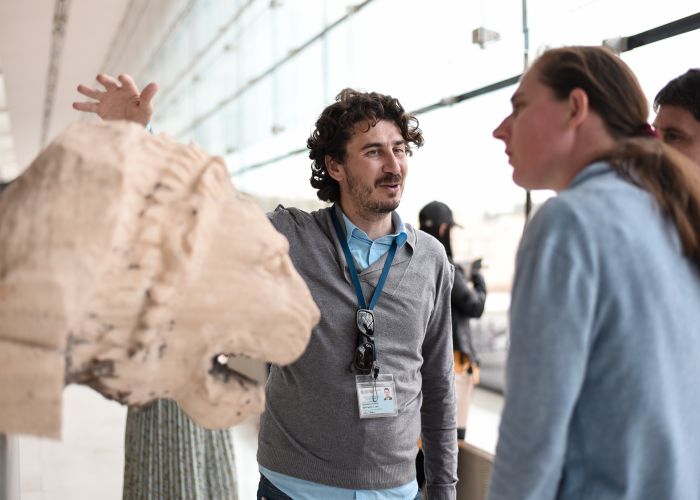
No list of Athens’ museums would be complete without mentioning the city’s most emblematic and popular museum, the modern Acropolis Museum.
Inside the Acropolis museum, you can admire exhibits of the excavations that took place on the sacred Acropolis hill brought to light, from unique works of art to everyday household items that give an insight into the daily lives of the ancient Athenians.
More than 35 years of scientific study were needed for the final design and implementation of the New Acropolis Museum in 2000, one of the most important museums in the world.
Bathed in sunlight and opposite the iconic Parthenon monument, the three levels of the modern building of Bernard Tsumi, now the city's landmark, house more than 4,000 exhibits ten times the size of its predecessor.

The Hall of the Archaic Acropolis stands out and, of course, the Parthenon Hall. At the same time, the rest of the spacious building of the Acropolis Museum hosts thematic presentations and periodic exhibitions.
Wonderful views from the interesting cafe-restaurant, nice shops with a wide variety of souvenirs and books, museum exploration kits for children, and frequent events put the unique Acropolis Museum on the agenda of the Athenians.
Address: Dionysiou Areopagitou 15, Athens 117 42
Telephone: 210 9000900
Closest metro station: Acropolis
4. Goulandris Museum
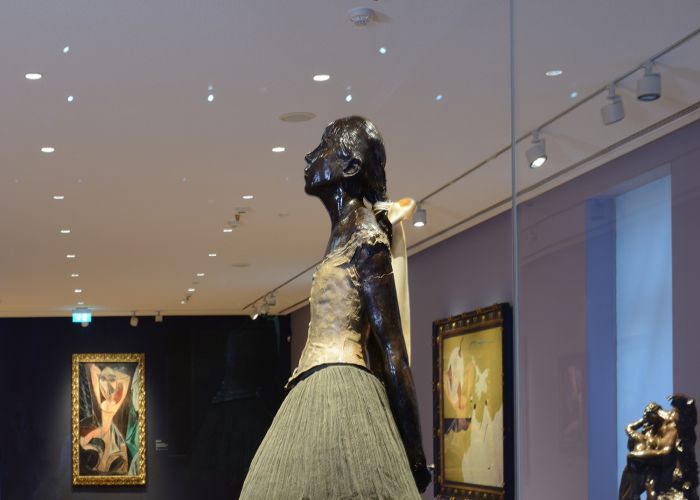
After decades of waiting, at 13 Eratosthenous Street in Pagrati, just a few meters from the emblematic Panathenaic Stadium, an imposing building that achieves the perfect balance between neoclassical and modern architecture houses the new museum of the Vassilis Foundation & Elizas Goulandris.
White curves on the stairs, a striking view of the Acropolis, light-colored wood, a unique shop, a library with 6,000 volumes from the wide range of arts, a basement of 400 sq.m., and a sophisticated cafe are shared on the 11 floors and 7,250 sq.m. of the building.
Vassilis and Eliza Goulandri met in the late 1940s, and soon after their wedding, they decided to create a collection of works of art. They started without having designed the framework, without having methodized their steps, and, of course, they could not imagine where it would lead them and what dimensions their involvement with art would take.
Although surrounded by distinguished historians and art professionals, they chose works based solely on their personal preferences and aesthetic codes.
For almost fifty years, they built their collection based on their personal taste, with care, patience, and true devotion, and with the ultimate goal, one day, to be exhibited in the museum of their dreams. Nuggets of history and imaginary journeys come to life on the museum's walls.
On the first floor, you can find modern, international - mainly European - art from 1870 to 1945. While right next door, there is a room dedicated to the pair’s rich collection of French furniture and works of art. There is furniture from their 18th-century Parisian apartment, as well as Chinese artifacts made of jade or porcelain.
Additionally, on the second floor, post-war contemporary art is also on display. Works from Pollock, Bacon, Giacometti, Nicholson, and Liechtenstein, several sculptures, including those of Nicky de San Fal, and a special room with dramatic lighting that gives the impression of light coming through the wall create an unprecedented experience. This is where contemporary art finds its truest expression.
Address: Eratosthenous 13, Athens 116 35
Telephone: 2107252895
Closest metro station: Acropolis
5. Museum of Cycladic Art
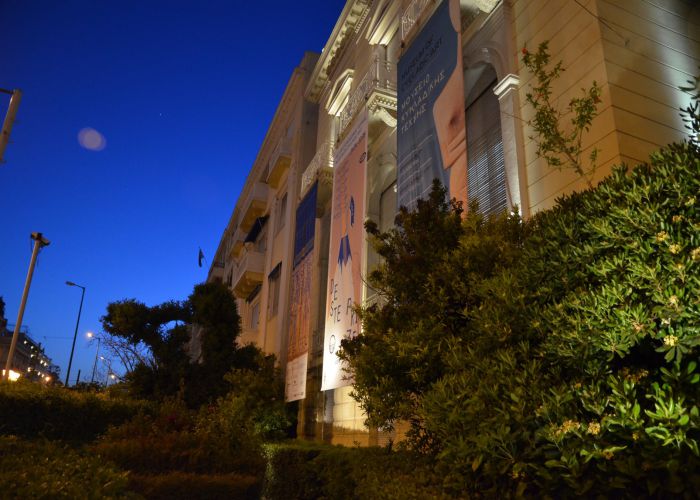
The Museum of Cycladic Art is dedicated to the study and promotion of the ancient civilizations of the Aegean and Cyprus, with special emphasis on Cycladic art of the 3rd century BC. millennium.
It was founded in 1986, initially to house the private collection of Nikolaos and Dollis Goulandris, and gradually expanded to host other important collections-donations.
Divided into two different buildings that are internally connected to each other, the Museum of Cycladic Art houses both its permanent collections in the main building and its periodic exhibitions in the neoclassical Stathatos Palace.
The exhibition spaces of the first building are spread over four floors, studying and promoting the ancient cultures of the Aegean and Cyprus in a rare cultural collage of Cycladic art, ancient Cypriot art, and ancient Greek art, as well as from everyday life to antiquity (5th-1st century BC).
Particularly interesting are the periodical exhibitions emphasizing the modern look at archeology and the cutting edge of contemporary art. At the same time, its cafe and shop are fixed meeting points of the city. The museum’s educational programs are both innovative and very popular.
Address: Neofitou Douka 4, Athens 106 74
Telephone: 2107228321-3
Closest metro station: Evangelismos
6. Benaki Museum
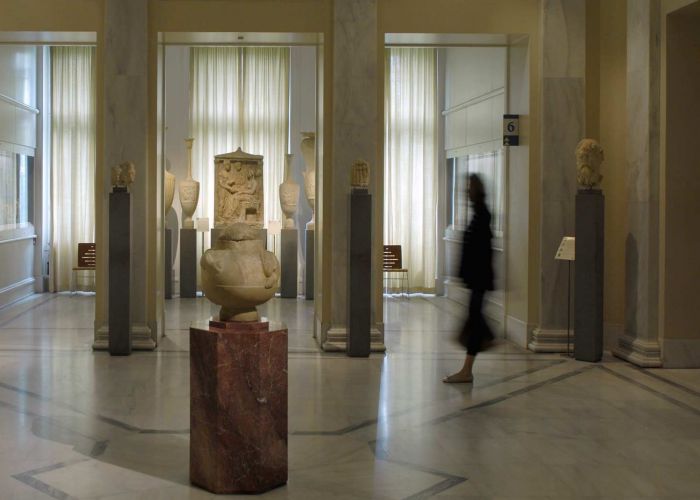
The Benaki Museum was founded in 1930 by the collector Antonis Benakis, a descendant of a prominent family of the Greek Diaspora.
The Benaki Museum remains one of the most important museums in Athens and the whole country, with six museum annexes, four archival annexes, and an extensive library. Today the collection exceeds 500,000 items, covering the full range of Greek art and culture, as well as works of Islamic, pre-Columbian, African and Chinese art.
The museum offers a unique narrative of Greek culture and interpretation of its artistic and intellectual aspects, putting it in constant dialogue with the evolution of the world in a wider context.
The museum’s sophisticated cafe is located on the ground floor. Its modern, minimalist style characterizes it, but also the warmth it exudes due to the huge glass surface overlooking the museum's atrium. Here you can enjoy your drink or dine in an environment that will make you feel like a world citizen.
Address: Pireos 138, Athens 118 54
Telephone: 2103453111
Closest metro station: Syntagma
7. Byzantine/Christian Museum
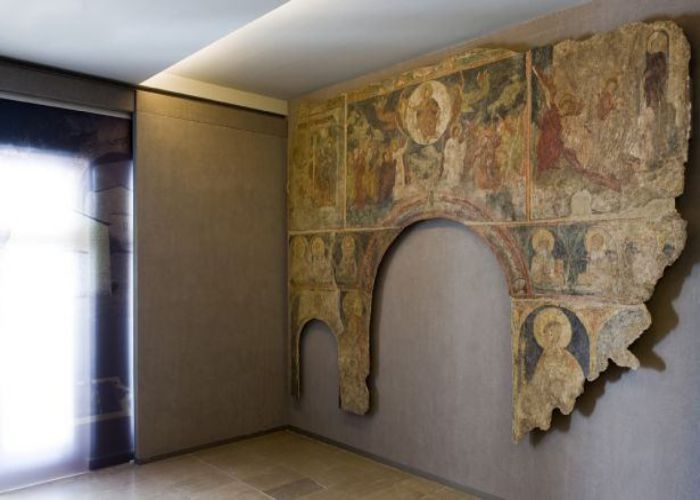
The Byzantine and Christian Museum was founded in 1914 and is one of the most historic, largest, and overall best museums in Athens and Greece.
Since 1930, it has been housed in the Villa ‘Ilissia’, which was built in the period 1840-1848 as the house of the Duchess of Placentia and is located at 22 Vasilissis Sofias Avenue, in Athens.
It has housed more than 25,000 exhibits with unique collections of icons, sculptures, small objects, murals, ceramics, textiles, manuscripts, and copies from the 3rd century to the modern era. The exhibits come from Greece and the Balkans.
Following its 90-year anniversary in June 2004, it continues its operation in the rooms of its new expansion after the concession of a large plot, which was formerly used as a military camp. Today, the new exhibition space occupies an area of about 5,000 square meters.
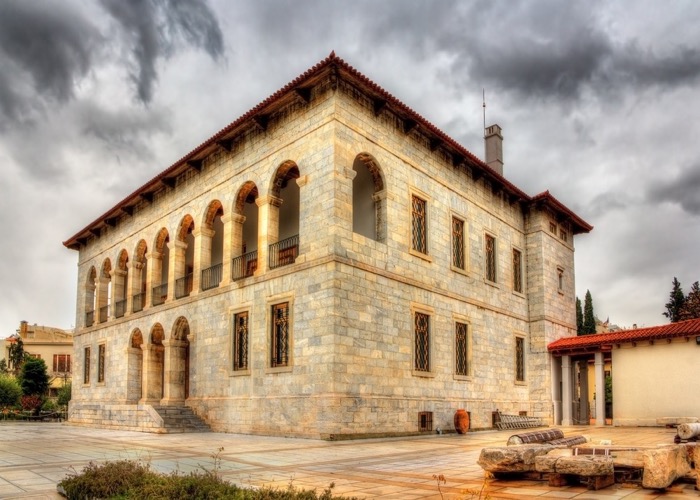
The Byzantine Museum of the 21st century is formed on the basis of a completely new museological proposal, which obeys the requirements of modern museology. There are about three thousand items on display at the permanent exhibition. They are organized in such a way as to tell "stories" and present aspects of the Byzantine and post-Byzantine world.
The first section, which was inaugurated in 2004, concerns the exhibition of early Christian and Byzantine collections of the Museum and mainly reflects the changes in the level of society and the doctrine brought about by the prevalence and spread, and finally, the consolidation of Christianity on the borders of the Byzantine Empire.
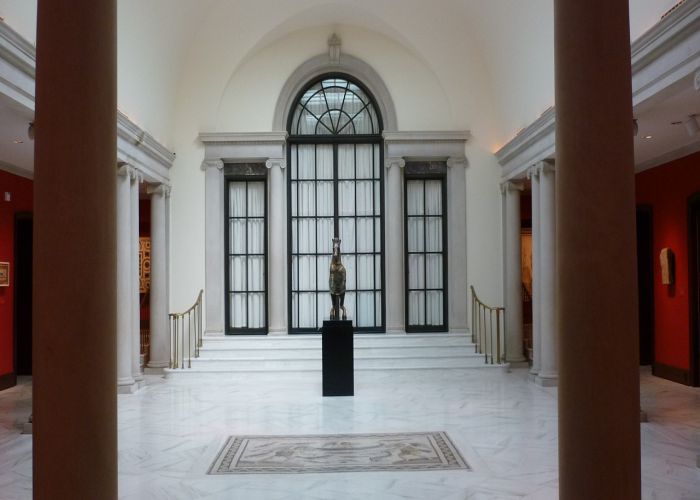
The second part, which was completed in 2010, is dedicated to the presentation of the post-Byzantine collections which presents, through the objects, the evolution of institutions, customs, religion, language, but also common perceptions. which eventually shaped the identity of the Romans.
Address: Vasilissis Sofias Avenue 22, Athens 106 75
Telephone: 2132139517
Closest metro station: Evangelismos
8. The Epigraphic and Numismatic Museum
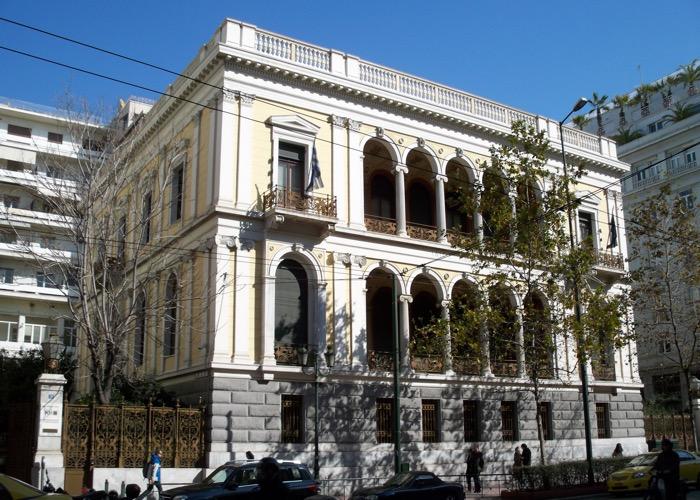
The Epigraphic and Numismatic Museum is housed at Iliou Melathron (The Palace of Troy), an architectural fusion of Renaissance Revival and Neo-Classical with a duck egg yellow exterior and rooms resplendent with mosaics and murals.
It was understandably once revered as the most magnificent private residence in Athens and was built for the archaeologist Heinrich Schliemann in 1880.
Its collection contains around 500,000 objects, and these are by in large coins, medals, weights, and lead stamps.
Beginning from the 6th century BC with coins from the Greek city-states (poleis) and continuing to the Hellenistic and Roman periods, the exhibition is arranged in such a way that it takes you through a journey in time, demonstrating how coinage has developed over the centuries.
In addition, there are pieces from the Byzantine and Medieval eras from across Europe and the Ottoman Empire. The museum also has a considerable collection of books on the disciplines of numismatics and archaeology, and it also houses extensive archives.
The walls are adorned with iconography, art, and murals, many of which are copies of Pompeian themes and scenes of Troy and Mycenae.
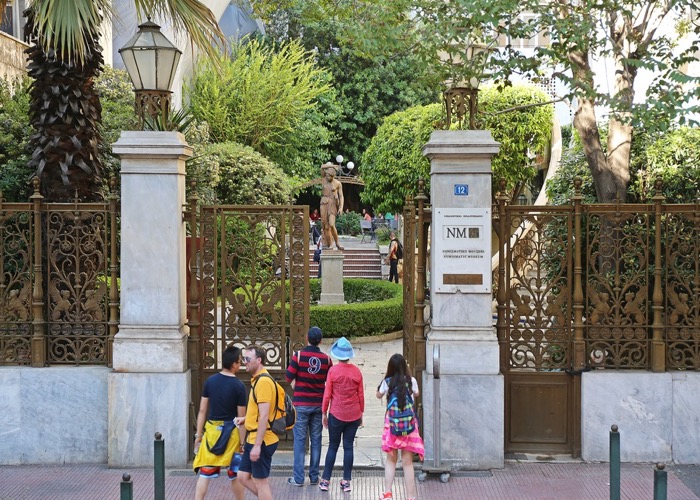
As well as functioning as a public museum it regularly hosts symposiums, lectures, and international collaborations.
It remains to this day a center for study and research, giving its patrons truly inspiring surroundings in which to work.
To top it all off, the museum has a café open to the public within its grounds and boasts a beautiful garden, complete with replicas of ancient Greek statues.
There is also a shop where copies of artifacts can be bought along with memorabilia, cards, notebooks, and games.
Whether you are fascinated by numismatics, a lover of Renaissance revival or simply searching for an afternoon of intrigue and wonder, the Numismatic Museum is a must-see.
Address: Iliou Melathron, El.Venizelou (Panepistimioustr.) 12, 10671 Athens
Telephone: + 30 210-3632057
Closest metro station: Syntagma
9. Museum of the City of Athens
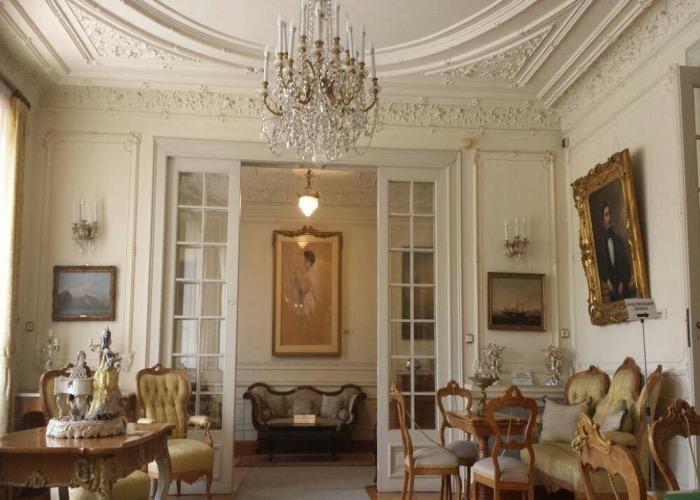
The Museum of the City of Athens: Vouros- Eutaxias Foundation was founded in 1973 by Lambros Eutaxias and his uncle Alexandros Vouros. It is housed in the former royal palace of King Otto and Queen Amalia of Greece.
As well as pieces from antiquity, sculptures, and many works of art from the Byzantine and Renaissance period, it also displays furniture arranged in such a way as to replicate typical rooms of the Athenian aristocracy of the 19th century.
The museum has many large oil paintings of Jaques Carrey, an art lover's heaven. It interestingly shows a painting of the Parthenon as it was before 1687 when it was tragically damaged by a barrage of cannon fire from Venetian forces attacking the city.
Amongst the plethora of interesting pieces is a portrait of Lord Byron, perhaps the most famous of the philhellene and so loved by the Greeks for his part in their emancipation from the Ottoman empire that a town, Vyronas, was named in his honor, a hand-written copy of the 1844 constitution of Greece used by King Otto himself and an extensive exhibition of work by some of the most talented Greek painters.
Sumptuously furnished with chandeliers, period pieces, and exquisite paintings, the Museum of the City of Athens is an experience that leaves you with an appreciation for the ambitious ideals of Renaissance Athens.
Take a turn around the same drawing room as King Otto once did and discover a time of revival, opulence, and resurgent philhellenism. Afterward, indulge in a little decadence yourself at the museum’s bistro, the Black Duck Garden, located in the garden of the 1836 mansion with an atmosphere fit for royalty.
Address: 5-7 Paparrigopoulou st. 105 61, Athens
Telephone: +30 210-3246164
Closest metro station: Panepistimio
10. Museum of Greek Folk Musical Instruments
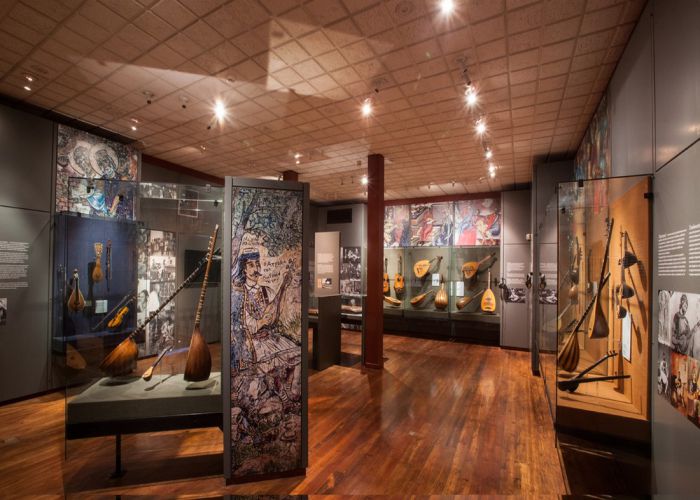
The exhibition of the Museum of Greek Folk Musical Instruments has on display no less than 1.200 Greek folk musical instruments dating from the 18th century to this day. Musicologist Fivos Anogianakis donated the instruments following 40 years of research.
In the museum, visitors have the opportunity to follow the evolution of Greek musical instruments across the years while also seeing for the first time rare instruments belonging to Greek expatriates, such as the Pontifical Greeks and the Cappadocian Greeks.
Additionally, you can watch the course of popular instruments, such as the violin, that brought them to their current form. The museum is housed in a magnificent 1840 mansion in Plaka adjacent to the Roman Agora.
The exhibition takes up three floors and is divided into four levels, which match the subdivisions of musical instruments distinguished by ethnomusicology. The museum was inaugurated on June 6, 1991, and remains to this day one of the most fascinating and insightful attractions of Athens, especially for all music lovers out there.
Address: Diogenous 1, Athens 105
Telephone: 2103250198
Closest metro station: Monastiraki
11. Ilias Lalaounis Jewelry Museum
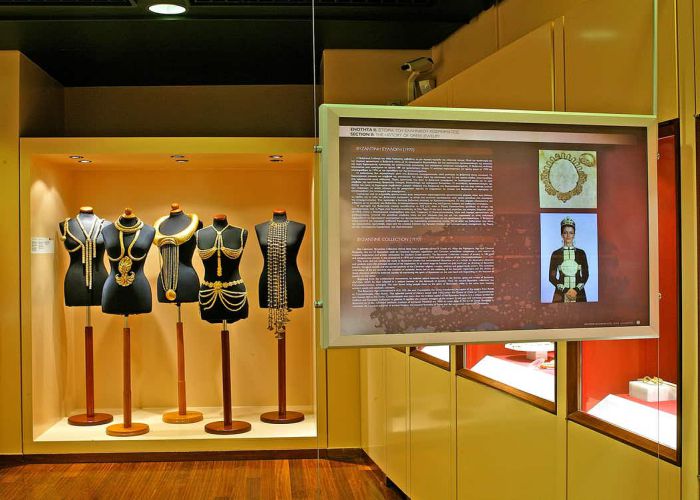
At the foot of the Acropolis lies another Greek culture hub: the Jewelry Museum of Ilias Lalaounis, which opened its doors to the public in 1994.
It is the only jewelry and decorative arts museum in Greece and one of the three in the world. The permanent exhibition of the museum hosts over 3,500 jewels and small sculptures, all designed by Ilias Lalaounis during the period 1940-2002.
Ilias Lalaounis was a distinguished goldsmith, jeweler, and jeweler designer, born and bred in the scenic Athenian neighborhood of Plaka, in the building where the Jewelry Museum is housed today. He is the only jewelry artist awarded by the French Academy of Fine Arts.
The jewelry of the exhibition is inspired by ancient Greece, the art and architecture of Byzantium, nature, and modern technology.
On the ground floor, a workshop allows visitors to watch silversmiths in action, while a cafe, a gift shop, and a library centered on jewelry can also be found on its premises.
It’s worth noting that Ilias Lalaounis Jewelry Museum was the first museum that became accessible to people with mobility difficulties in Greece.
Address: Karyatidon and Kallisperi Sts, Athens 117
Telephone: 2109221044
Closest metro station: Acropolis
12. Railway Museum of Athens
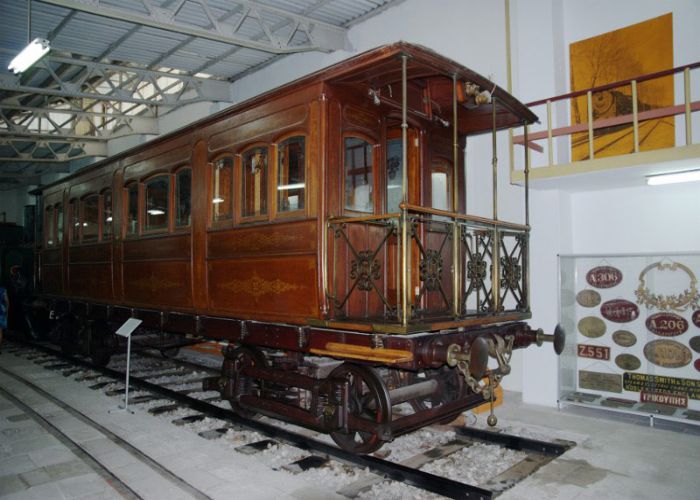
Athens Railway Museum was founded by the Hellenic Railways Organization in 1979 and consists of five halls, where a collection of objects related to the history of rail transport in Greece are on display.
It is the largest railway museum in Greece, consisting of two main buildings and a courtyard designed for outdoor events, including a recreational train for children.
The museum’s exhibits encompass -but are not limited to- conventional locomotives dating back to 1884, mine locomotives, wagons of old trains, royal vehicles, the tram of Athens from past decades, manually-operated trolleys, mockups, and photographic material, as well as tickets, uniforms and machine tools of the last century.
If you’re a train greek or just love to educate yourself on the journey of civilizations through technology, you should definitely include this museum on your bucket list for Athens!
Address: Akti Kallimasioti 275, Pireaus 185 45
Telephone: 2105126295
13. Hellenic Children's Museum
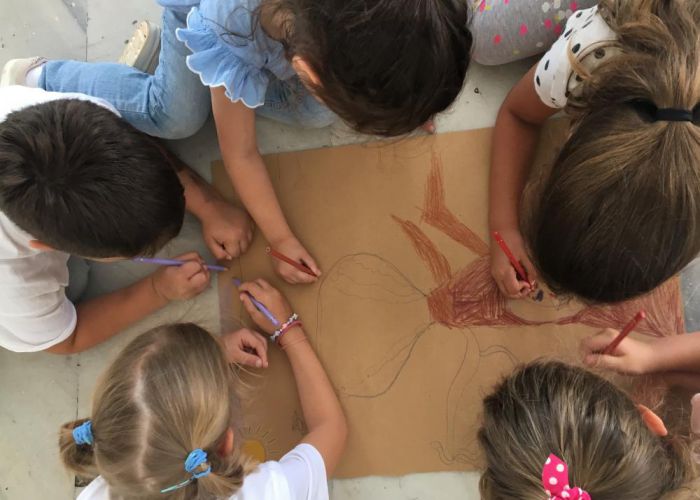
If you’re visiting Athens with your kids and you want to keep your kids occupied and happy, a stop at the Hellenic Children’s Museum is highly recommended!
The Hellenic Children's Museum is a not-for-profit association of public interest for educational and cultural purposes that help children fulfill their potential to become socially aware citizens and contribute positively to society.
The Children's Museum’s activities are based on theories that suggest learning is more effective through active participation and interaction.
Therefore, following this hands-on approach, the museum’s educational programs and exhibits are three-dimensional environments designed by dedicated scientists that promote critical thinking, initiative, creativity, and autonomy.
Both fun and educational, your kids will have the opportunity to explore the world around them, interact with their peers, and gain self-awareness in a safe and controlled environment.
Address: Rigillis &Vasileos Georgiou B' Ave 17-19, Athens 106
Telephone: 2103312995
Closest metro station: Acropolis
14. Herakleidon Museum
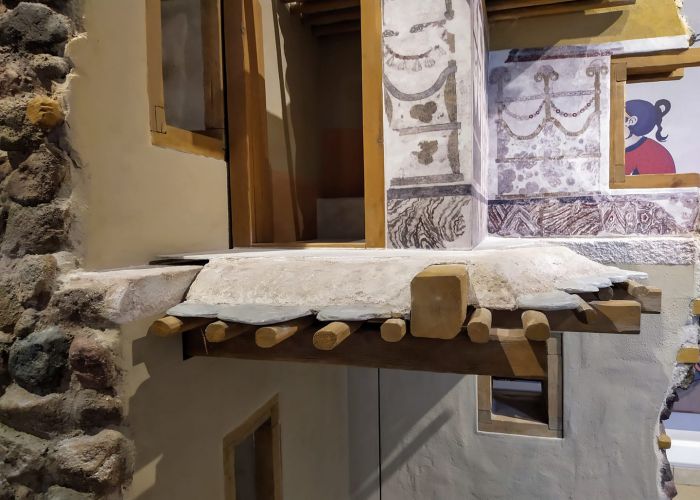
The Herakleidon Museum is a small museum in the center of Athens, which showcases true innovation and redefines the meaning of the word ‘museum’ and the way it operates. It was founded in 2004 and is housed in two buildings in the area of Thiseio.
It is perhaps more accurate to say that the Herakleidon Museum is more of an exhibition with the function of a knowledge laboratory for adults and children.
With its establishment, the museum hosted mainly artistic activities and organized exhibitions, music, and literary evenings, workshops, and seminars.
Today, the museum focuses more on educational programs and exhibitions aiming to bring the public closer to the scientific and technological achievements of the ancient Greeks and other personalities with noteworthy history and remarkable achievements.
The museum has exhibited very important artists and has collaborated with important institutions both in Greece and abroad, bringing to its premises works of art of great value or objects of historical and archaeological importance. The museum aims to reveal the country's past by educating those who live in the present.
Through the exhibition of the countless accomplishments of the ancient world, science, and technology of the ancient world aspires to stimulate both citizens and students to engage in science, technology, and art.
Address Iraklidon 16, Athens 118 51
Telephone: 2103461981
Closest metro station: Monastiraki
15. Museum of Islamic Art
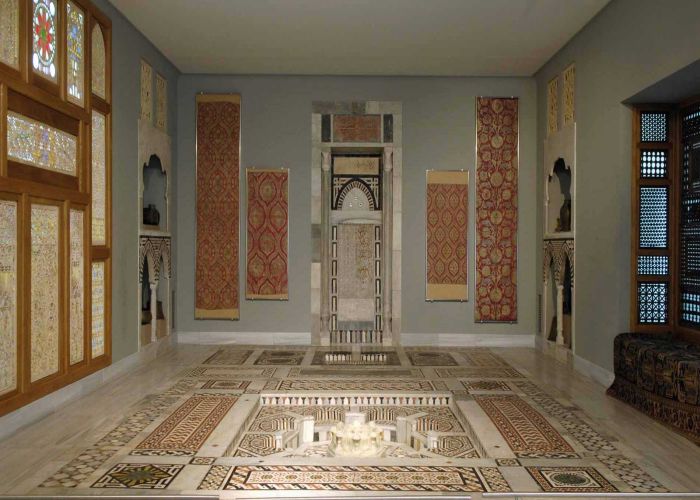
The unity of the works of Islamic culture, with all the individual variations, which show its manifestations from India and Persia, Mesopotamia and Asia Minor, the Middle East, Arabia, Egypt, and North Africa to Sicily and Spain, is one of the most important in the world.
More than 8,000 specimens of pottery, metalwork, goldsmithing, textile woodcarving, glass, smaller groups of bone objects, inscribed tombstones, and weapons, as well as the marble interior decoration of a reception hall of a 17th-century mansion continuation of the Islamic time from the early Islamic to the Ottoman era and the evolution of Islamic art until the 19th century.
The collections began to be compiled by Antonis Benakis in Egypt during the first decades of the 20th century, at the same time as the other major collections in Europe and America. In fact, their material is often complemented by that of the Benaki Museum.
The most famous exhibits of the collection include the two wood-carved doors of Mesopotamia of the 8th century, a unique wicker rug of Tiberias of the 10th century, the brass box with the signature of Ismail ibn al-Ward al-Mawsili20 and the date of Ahmad ibn al-Saraj dating to 1328/29 and the famous 16th century Bursa velvet saddle.
The collections of Islamic art are exhibited in the Museum of Islamic Art, which is housed in the neoclassical building complex donated by Lambros Eutaxia, and located in the historic center of Athens near the ancient cemetery of Kerameikos.
The primary goal of this effort to make the collection autonomous is to highlight Islamic artistic creation, easy access to the material, and its documented presentation.
After completing your visit to the museum exhibits, you can sit on the terrace and enjoy your drink and coffee or have a snack from the coffee kitchen, enjoying the view.
Address: Agion Asomaton 22 &, Dipilou 12, Athens 105 53
Telephone: 2103251311
Closest metro station: Monastiraki
16. War Museum
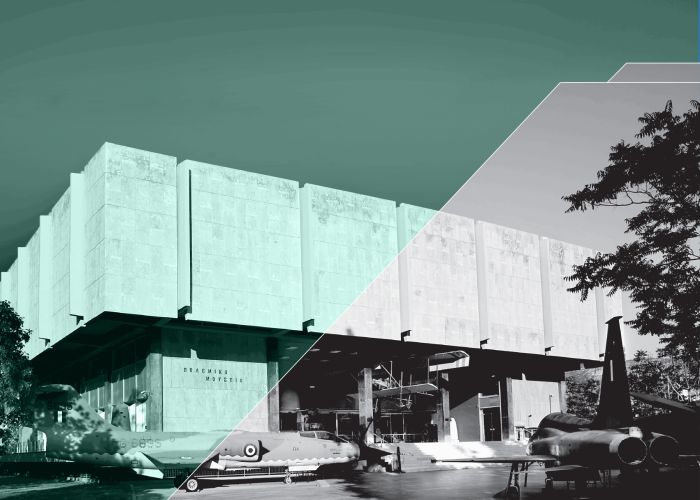
The War Museum of Athens is the largest and most important war museum in Greece. It was inaugurated in 1975 and supervised by the Ministry of National Defense.
It is housed in a modern building at the junction of Vasilissis Sofias and Rizari streets, right next to the Byzantine and Christian Museum.
Its rich collections are exhibited across four floors and in the open space around the building and cover the entire Greek war history from prehistoric times to the present day.
Its impressive exhibits include weapons, heirlooms, maps, photographs, engravings, works of art, military uniforms, war flags, firearms, Navy armaments, and Air Force aircraft.
Address: Rizari 2-4, Athens 106 75
Telephone: 2107245838
Closest metro station: Evangelismos
17. The Athens Pinball Museum
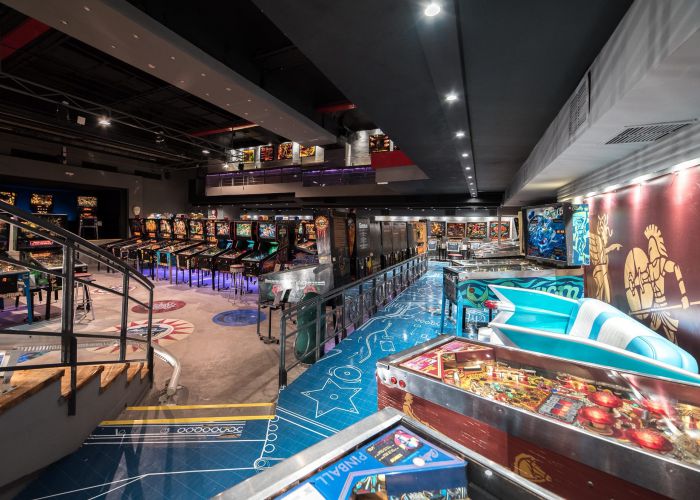
A stone's throw from the Acropolis metro, there is a mini Las Vegas that consists of a forest of colorful pinball machines.
The goal of the Athens Pinball Museum is to present to visitors and children over eight years of age more than 100 collectible Pinball games. These machines have been manufactured from 1958 until recently and are in excellent condition.
Another purpose of the museum is to re-celebrate these small audio-visual wonders of electro-mechanics and preserve them over time.
The design of the space was done by the architect-designer Konstantinos Lambrou, who also designed the clothes, which you will also find in the museum shop.
Address: Makri 2 &, Dionysiou Areopagitou, Athina 117
Telephone: 210924 5958
Closest metro station: Acropolis
18. Athens City Museum of Illusions

Enter an exciting world that fools you into believing in your senses but surprises you with your actions and a world that confuses you totally but also educates you.
Visit the museum, and you will be pleased because nothing looks exactly as it appears.
Explore this illusion-filled universe—experience what's impossible. Amusing and awesome tricks can help you learn how to perceive things you don't know in your mind.
Address: Ermou 119 Entrance from, Astiggos 12, Athina 105
Telephone: 2102201610
Closest metro station: Syntagma
19. Archaeological Kerameikos Museum; a dive into Greek history
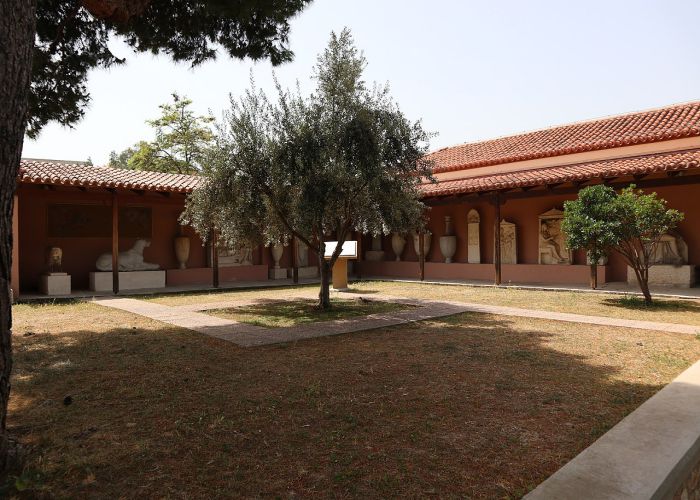
The old burial cemetery in Athens at Ermou Street below Monastirakis's flea market offers a charming small museum.
The Archaeological Museum of Kerameikos houses exhibits, almost exclusively of a funerary nature, that come from the excavations of the German Archaeological Institute in the archaeological site of Kerameikos, an area of 38,500 sq.m.
The museum is located inside the archeological site of the same name and can be accessed from the pedestrian street of Ermou Street (Ermou 148), near Piraeus Street.
It is a modest ground-floor square building, the facade of which is framed by a roofed external portico. Inside there are four exhibition spaces surrounding the roofed atrium, landscaped with olives and laurels as a small inner garden.
The first area and the atrium house the works of sculpture, covering all periods of antiquity. At the same time, in the remaining three rooms, ceramics and other finds are exhibited, mainly from the necropolis of Kerameikos.
Behind the showrooms are storage areas and the maintenance workshop. A publishing house and shop can be found at the entrance to the archaeological site on Ermou Street.
Address: Ermou, Athina 105 53
Telephone: 2103463552
Closest metro station: Kerameikos
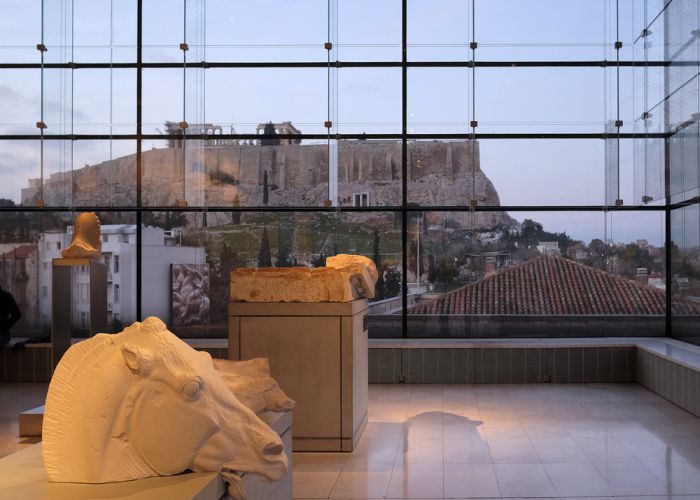
Final Thoughts
As you understand from all the above, Athens, the well-known cultural hub, doesn't lack fascinating museums worth visiting.
Wear your most comfortable shoes and explore the streets of the Greek capital that will take you to the museums in Athens that will broaden your horizons.
Of course, you can also check out our Greece vacation packages and discover fascinating treasures outside the greek capital; the choice is yours!





